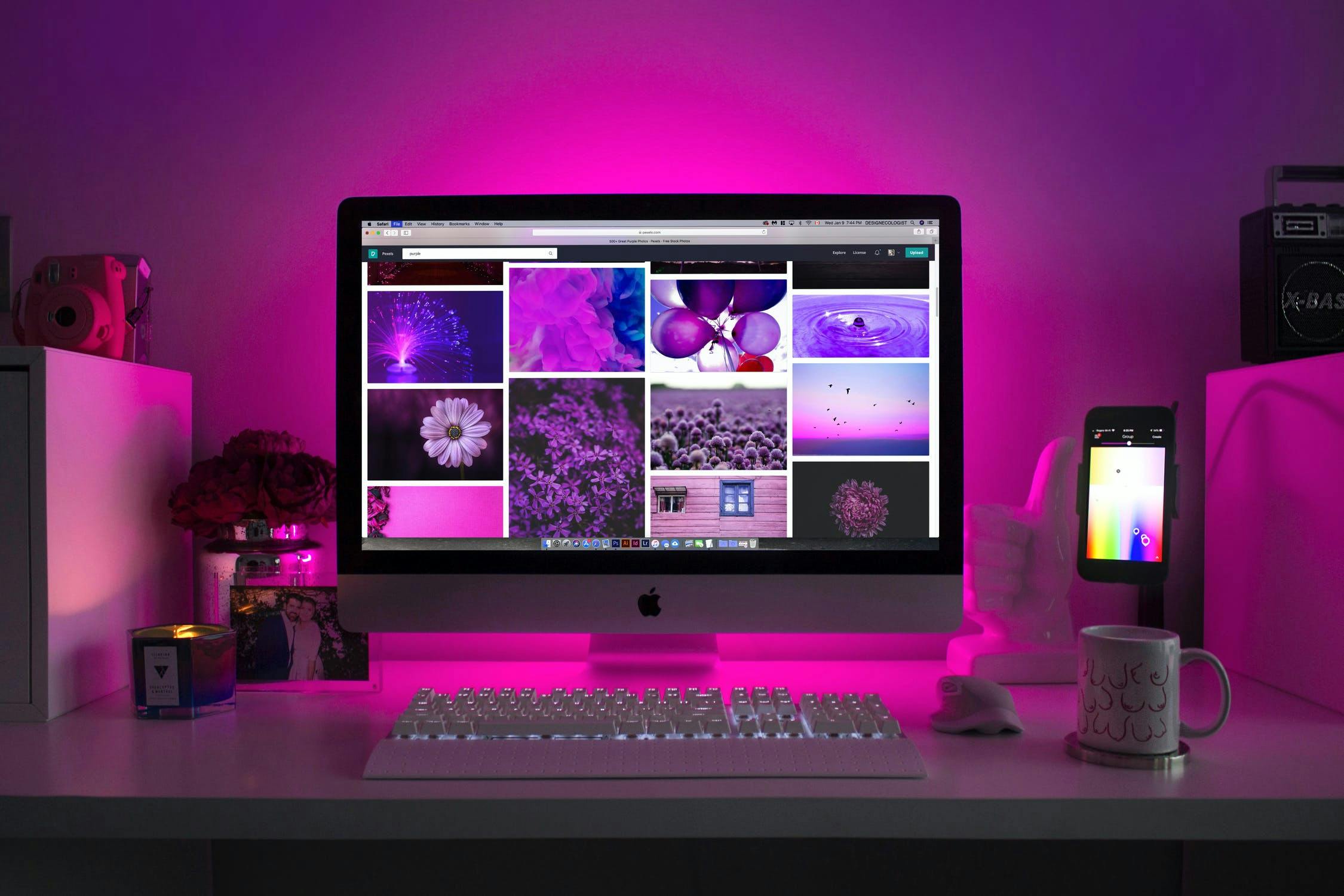It’s crucial to design your website well as it helps form the first impression of your business to your target audience. You are judged within seconds, and if your web design is not appealing, or if it’s somewhat outdated, there goes the audience to your competitor’s website.
New Year might call for a new web design — or at least significant improvements to the old design — so you get to stay on top.
Here are a few web design tips and best practices for 2022 to help you create better-looking and better-performing websites.
1. Embrace white space
The empty space on a webpage is just as crucially important as is the space that is filled with elements and colors.
White space helps you step out of an overcomplicated and confusing design and provides your user with a sense of direction amongst all the other aspects of the page, e.g., texts or images.
Through this natural flow of navigation flow, the user’s mind relaxes and is not burdened as they scroll through the provided data and skim to get the important points. Use it to its full advantage and let the crucial elements stand out on their own as they get singled out in the spotlight.
2. Display the primary CTA in the main menu
A crucial element of a website is the Call to Action (CTA). After all, that is usually the most important goal from the perspective of the business website — to encourage visitors to complete the CTA.
How to display your CTA goes a long way in affecting the user experience.
The idea is to make the CTA easier for website visitors, so they don’t spend their time, frustrated, trying to find where to go next. And the main menu is one of those places that are the easiest to find on a website.
Adding your primary CTA to the main menu will likely help improve the user experience and navigation on your website. Besides, it can also help improve the conversion rate.
When we tested adding CTA to the main menu on a B2B SaaS website, we noticed increased conversions by up to 31%.
3. Understand the importance of color psychology

Yes, all these colors are pretty to look at, but that’s just not all they do. From emotional attachments to moods and even judgments and decisions, all are influenced by colors.
But how does this work? And how can you bring it to your benefit?
Let’s take a look at color psychology first. According to color psychology, there is a connection between colors and feelings. This psychological and emotional link can be personal, cultural, or universal. The connotations attached to color are subjective. However, some meanings are universal, like the yellow-based spectrum evokes a range of emotions from warmth and comfort to anger and so on.
After understanding what color psychology is and how it can influence people, use it to your advantage. The visual identity and outlook that you create on your webpage must be defined after carefully considering color psychology. Pick out the color schemes that are associated with positive vibes that can trigger the required response and emotion.
For example, the color blue evokes the emotions of safety and a sense of security. That’s why so many banks and financial institutions rely on blue for their branding, logo, and website color.
With that, the overall perception of your brand and website will improve.
4. Ignore website carousels and sliders
Slide away the idea of sliders if you want an improved website design. Most designers are persistent in using sliders, but they often fail to notice how it can negatively impact your website, being unfavorable for many reasons.
First and foremost, carousels slow down a website so the user wouldn’t bother waiting and simply leave. If the sliders are added, they become the more prominent element on your page — which might minimize the interaction with CTA and/or the information on the page.
Another important remark to be added here is regarding space. As we’ve already pointed out how important white space can be. Sliders, which often look like ads, take up a lot of space that could have been useful otherwise. Not only do you produce a negative impact, but you might also end up confusing the reader.
Besides, website visitors do not even click on subsequent images in a carousel. According to a study by Notre Dame University, position #1 in a carousel receives 90% of the clicks.
5. Leverage social proof and customer testimonials
Reviews or ratings, get social proof on your website.
In the world of online marketing, users try to find some social proof so that they get an idea of your product’s or service’s experience. The behavior of already existing customers influences the behavior of new, potential customers.
Reading positive testimonials and customer reviews can have a positive impact on the overall revenue-generation capacity of your website. In addition, it can also help increase the overall engagement and traction on the site.
When including social proof and customer testimonials, we recommend using people in photos, but it’s important that those are not stock photos. One case study by Basecamp showed that conversions increased by over 102% after they changed from a text-based landing page to a large photo of a person in the background.

And anything that helps increase engagement and conversion on the site is a good design element that is worth including.
6. Prioritize website speed
Lastly, a reminder that website speed matters a lot. The speed is not only important for better user experience but also used by Google for rankings. Make sure to run speed trials on your website from time to time and keep it faster.
You’ll notice that website design plays a crucial role. Depending on the design choices you make (for example, whether or not you use heavy GIFs or carousel images) can increase or decrease the loading speed of your website.
Remember that your core web vitals also affect search engine rankings. These vitals analyze the kind of user experience being provided by your website, from speed to stability and interaction. All of this as a whole impacts the SEO ranking of your site.

Learn how to speed up your website. You can also check the loading speed of your website with our free Site Load Speed Test tool.
7. Scrolling vs. Clicking
Should you create a short page with lots of links to click for users, or should you create a long page that requires users to scroll instead of clicking?
It can be a tough web design decision to make, but it doesn’t have to be.
A case study by Crazy Egg revealed that putting everything on one long page typically produces better results. Online users prefer scrolling instead of clicking, and we believe that the ever-growing influence of mobile and social feeds that encourage scrolling (TikTok, Facebook, Instagram) has contributed to this.
When Crazy Egg put the two types of pages against each other, the longer page (which relies on users scrolling instead of clicking) produced 30% more conversions.
Conclusion
Creating a website design that not only looks pretty but also serves your overall business and marketing goals is a challenging task. However, with the best practices and tips mentioned in this article, we hope that task just got a little bit easier for you or your web design team.
Good luck!
